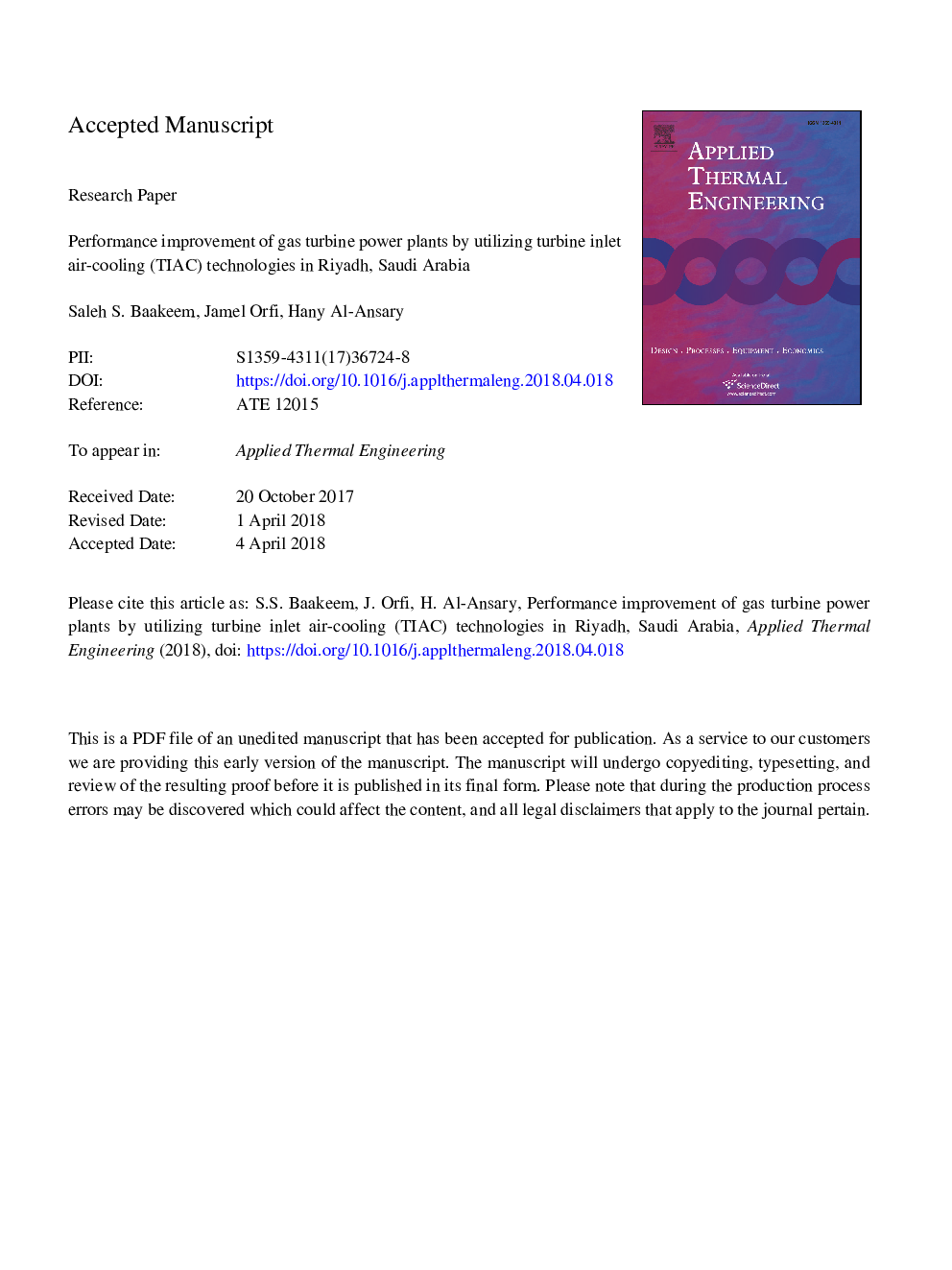| Article ID | Journal | Published Year | Pages | File Type |
|---|---|---|---|---|
| 7045273 | Applied Thermal Engineering | 2018 | 57 Pages |
Abstract
Gas turbine performance is very sensitive to the ambient air conditions, particularly in hot and arid climates. Various turbine inlet air cooling (TIAC) techniques including mechanical vapor compression and lithium bromide-water absorption refrigeration systems are used in several locations worldwide. This work concerns a comparative study using mass and energy balances and cost analysis of several cooling technologies coupled with a typical gas turbine under Riyadh weather conditions. The results are expressed in terms of yearly variations of power output, fuel consumption, and thermal efficiency of the gas turbine unit. They also include the total and operating costs and the payback period for each configuration of TIAC systems. The study proposes first systematic approaches to determine the air cooled temperature at the compressor inlet and the corresponding cooling capacity for the considered TIAC systems. The optimum values of such air cooled temperature and cooling capacity are found to be 8â¯Â°C and 36â¯kW/m3â¯sâ1, respectively. The comparative study shows that using the media evaporative cooling, the simple mechanical vapor compression or the single-effect H2O-NH3 absorption cooling systems are not recommended. However, the sub-cooling multistage compressor system coupled with a wet cooled condenser and the single-effect LiBr-H2O-absorption refrigeration systems show better performance.
Related Topics
Physical Sciences and Engineering
Chemical Engineering
Fluid Flow and Transfer Processes
Authors
Saleh S. Baakeem, Jamel Orfi, Hany Al-Ansary,
